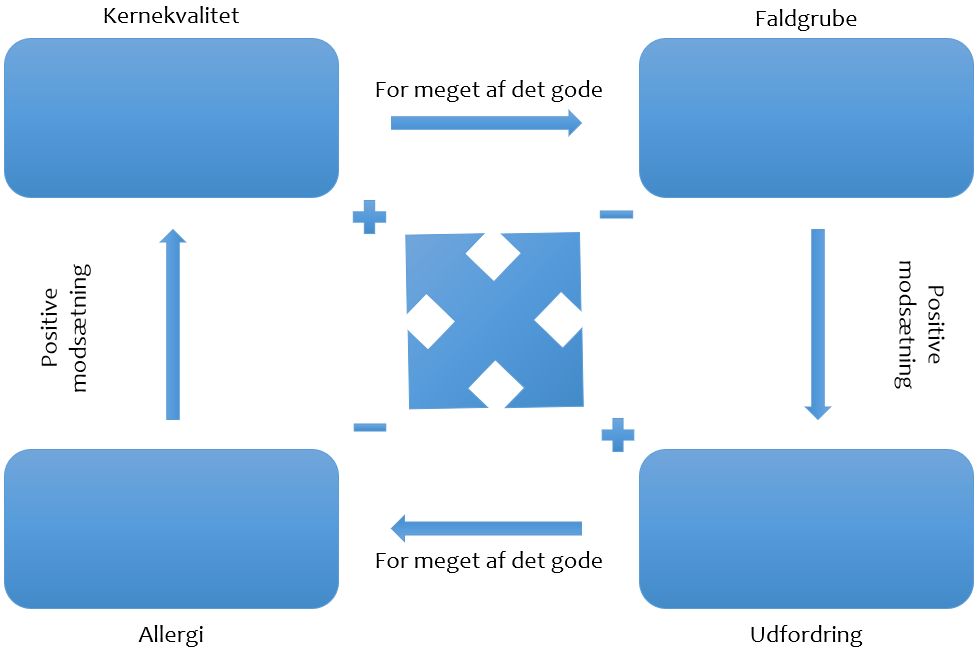Psychological safety as organizational culture
Bring all skills into play
The research of the past 30 years is clear and unambiguous. Teams that achieve strong results have a high degree of psychological safety. This means that everyone in the team feels secure in sharing doubts, uncertainties, vulnerabilities, unconventional ideas, and ambitious proposals without fear of being looked down upon or criticized.
In a culture characterized by psychological safety, there is both a high degree of well-being and many conflicts and disagreements. Precisely because it is safe, employees can engage in "healthy disagreement" and do not need to hide from each other.
When we work with psychological safety culture in your organization, we start by getting to know your team or organization.
What is success for you? When do you succeed? In which situations do things go wrong? What do you dream of, both in terms of results, collaboration, and well-being?
We base our approach on Harvard professor Amy Edmondson's concrete leadership tools, and we typically include feedback training as one of the core elements when developing a culture of psychological safety. Relationships and responsibility are key factors. Everyone must feel that they can be themselves, with their individual strengths and weaknesses.
It’s not necessary for everyone to like everyone. After all, it’s a workplace, not a family. However, everyone must still understand that they have an important shared responsibility for making the workplace function, and that every conversation either strengthens a relationship or works to undermine it.
Culture is not just something that exists. Culture is created by people. What should be the defining characteristics of the culture you want to create?


Self-organization
We are all leaders!
Since the former McKinsey consultant Frederic Laloux published his book Reinventing Organizationsin 2014, there has been increased momentum around co-leadership, self-organization, holistic thinking, decentralized decision-making, and purpose-driven leadership.
The core idea of co-leadership is: We are all leaders. Hierarchies with managers and heavy bureaucracy have been replaced by a flatter organization, where everyone – regardless of job function – has the opportunity to be involved in important decisions.
Can it really work? The answer is: Yes, around the world, thousands of organizations, including large industrial companies, are organized entirely or partially based on the principles of co-leadership. Co-leadership does not mean less leadership. On the contrary, it gives all employees the opportunity to make decisions, take on leadership roles, and contribute to setting direction.
It places new demands on both leaders and employees. They must now address complex issues and strategic decisions that previously were handled solely by the managers.
Responsibility and mutual respect are crucial – regardless of title and role. Problems will still arise. The difference is that now, there are no managers to pass the problems onto. Taking responsibility can unlock enormous potential for both professional and personal development for all employees.
For this to succeed, it is crucial that the organization learns new decision-making processes and develops simple and effective communication and feedback habits. This ensures that the best ideas are heard, daily quality assurance and development can take place efficiently, and employee development happens on a factual and informed basis.
Core Quadrant
Why make the simple complicated?
The Core Quadrant® is a development tool that simultaneously helps you gain insight into yourself and your surroundings. It provides concrete suggestions on how you can develop and strengthen your behavior and expertise, while also helping you work better and more smoothly with others.
The Core Quadrant contains many of the qualities found in most personality tests, but with an added action-oriented layer that makes it particularly suitable for anyone working in teams.
The mindset and methodology were developed by the Dutch engineer and consultant Daniel Ofman. He says: "The model is almost suspiciously simple. It can be explained in 10 minutes. After that, you’ll spend two hours on it – or the rest of your life." He is right – and you can quickly experience its impact yourself. Below, the model with its 4 steps is explained.

The 4 Quadrants
The Core Quadrant® is based on what Daniel Ofman calls core qualities. Every person has core qualities. These are traits we almost take for granted. Often, we don’t think they are anything special, but when others talk about us, they will often highlight those very qualities. Examples of core qualities include: carefree attitude, decisiveness, perseverance, risk-taking the list is endless.
All qualities can become too much of a good thing. When that happens, we move into what Ofman’s model calls the Pitfall. When the quality of carefree attitude becomes too much of a good thing, it can end up in superficiality or indifference. That would be our pitfall if we possess the quality of carefree attitude.
Along with a pitfall, we get a Challenge. This is the quality that represents the positive opposite of the pitfall. If the pitfall is superficiality, the challenge could be seriousness. The core quality and the challenge should, as much as possible, balance each other. So, in the example here, the person could benefit from aiming to develop behavior with carefree seriousness. At first, this might sound contradictory, but the model helps us think in both/and terms rather than either/or.
When seriousness becomes too much of a good thing, it can develop into pessimism or outright negativity. This is addressed in the fourth quadrant, the Allergy. When a person with carefree attitude as a core quality encounters a pessimistic person with a negative outlook, it often creates sparks. But in reality, the pessimistic person simply has too much of the quality of seriousness, which the carefree person could actually benefit from having more of. In other words, the carefree person can learn a lot from the person they initially can’t stand.
Kim Fogh is certified by Daniel Ofman in the Core Quadrant®. Leadership Lighthouse offers internal corporate workshops and personal coaching based on the Core Quadrant.
Would you like to learn more about how Leadership Lighthouse can help you or your organization?
Fill out the form below, and we will get back to you as soon as possible. We look forward to assisting you!


